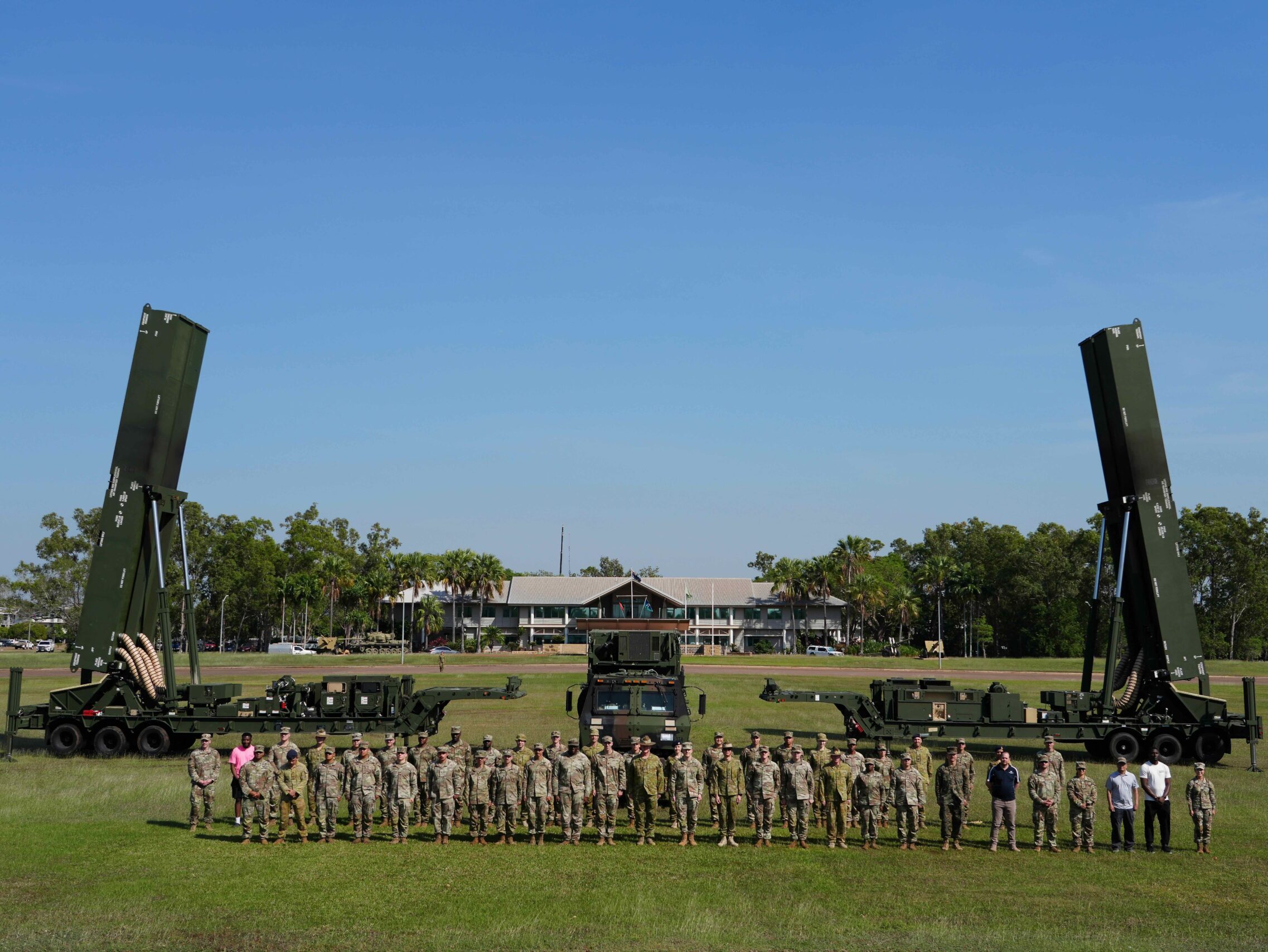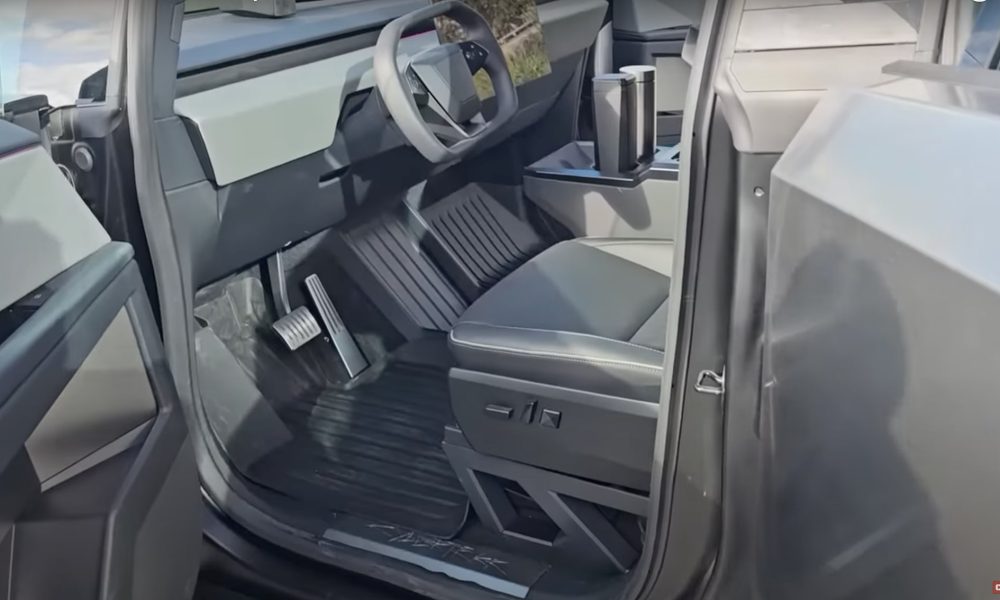October 9, 2025 • 2:15 pm ET
The imperative for hypersonic strike weapons and counterhypersonic defenses
Table of contents
Final report of the Hypersonic Capabilities Task Force
Lead author: Michael E. White
Co-chairs: Deborah Lee James and Ryan McCarthy
Task force director: Stephen Rodriguez
Program director: Clementine G. Starling-Daniels*
Task force staff: Mark J. Massa and Jonathan Rosenstein
* Starling-Daniels’s contributions were completed prior to her departure from a fulltime role at the in September 2025.
Task force members
Deborah Lee James, board director, ; twenty-third secretary of the Air Force; co-chair of the Hypersonic Capabilities Task Force,
Ryan McCarthy, twenty-fourth secretary of the Army; co-chair of the Hypersonic Capabilities Task Force,
Jim Cooper, former US representative (D-TN-05); former chairman, Strategic Forces Subcommittee, House Armed Services Committee
Madelyn Creedon, former assistant secretary of defense for global strategic affairs, US Department of Defense
Doug Lamborn, former US representative (R-CO-05); former chairman, Strategic Forces Subcommittee, House Armed Services Committee
James McConville, general (ret.), US Army; fortieth chief of staff, US Army
Whitney McNamara, senior vice president, Beacon Global Strategies; nonresident senior fellow, Forward Defense, Scowcroft Center for Strategy and Security,
Industry task force members
Felipe Gomez del Campo, CEO, Specter Aerospace
Mick Maher, chief strategy and commercial officer, Amaero
Katrina “Kat” Hornstein, director, vehicle systems, Ursa Major
Michael Johns, senior vice president, Kratos
Mike Manazir, vice president, federal, Hadrian
Mark Rettig, vice president and general manager, Edison Works, GE Aerospace
Ralph Sandfry, director, advanced capabilities, Lockheed Martin
Zach Shore, chief revenue officer, Hermeus
Brian Zimmerman, senior vice president, global defense, Booz Allen Hamilton
Advisors
Reginald Brothers, former under secretary for science and technology, US Department of Homeland Security
Justin Johnson, former senior official performing the duties of the assistant secretary of defense for space policy
Lead author and methodology
Michael E. White was the inaugural principal director for hypersonics in the Office of the Under Secretary of Defense for Research and Engineering, serving from October 2018 to June 2023. In that capacity, White was responsible for leading the Pentagon’s vision and strategy for developing offensive and defensive warfighting capability enabled by hypersonic systems. White previously served as the head of the air and missile defense sector at the Johns Hopkins University Applied Physics Laboratory (JHU/APL). White is a board director of North Wind USA Inc., which provides research, development, test, and evaluation products and services in aerospace and defense, and of Textum, which produces advanced textiles and aerospace composites. As managing member of WhiteAero, LLC, he is a senior defense consultant for hypersonic, air, and missile defense systems and tactical and strategic strike systems. WhiteAero’s clients include Lockheed Martin and GE Aerospace, which are both supporters of the Hypersonic Capabilities Task Force and producers of hypersonic capabilities, as well as Stratolaunch, X-Bow Systems, Cerberus Capital Management, Karman Space and Defense, Textum, MIT Lincoln Laboratory, JHU/APL, ACMI, and Riverside Research, all of which are involved in hypersonic capabilities.
As part of the research process for this report, the lead author conducted several dozen interviews and consultations with members of the ’s Hypersonic Capabilities Task Force, current and former officials in the US Department of Defense, congressional staff members, and industry representatives. The full task force convened several times over the course of the project to develop the findings reflected in this report, but the report’s analysis and recommendations do not necessarily reflect the views of all individuals consulted. This effort was conducted under the leadership of task force director Stephen Rodriguez, former Forward Defense director Clementine G. Starling-Daniels, deputy director Mark J. Massa, and program assistant Jonathan Rosenstein.
This effort has been made possible through the support of Amaero, Booz Allen Hamilton, GE Aerospace, Hadrian, Hermeus, Kratos, Lockheed Martin, Nominal, RTX, Specter Aerospace, and Ursa Major.
The maintains strict intellectual independence for all of its projects and publications. The Council requires all donors to agree to the Council maintaining independent control of the content and conclusions of any products resulting from sponsored projects.
Foreword
The United States stands at a critical juncture. The strategic environment is defined by the return of great power competition and the rapid proliferation of advanced military technologies that challenge long-held US advantages. China and Russia have invested heavily in systems designed to deny US forces access to key theaters and to strike their forward-deployed assets and allies with unprecedented speed.
The fielding of hundreds of hypersonic weapons by US adversaries represents a paradigm shift in modern warfare, creating a battlefield asymmetry that the United States cannot afford to ignore. This challenge demands more than incremental improvements to the existing force; it requires a fundamental rethinking of the US strategy for deterrence and defense. During our time leading the US Air Force and US Army, we saw good progress against these objectives, but there is much more to be done.
That is why we have served as co-chairs of the ’s Hypersonic Capabilities Task Force. In its final report, the task force puts forth a clear-eyed assessment of this challenge and offers a comprehensive road map for action. The concept of integrated comprehensive layered defeat provides the strategic framework, and the imperative to field offensive hypersonic capabilities provides the critical tool. The recommendations outlined herein are actionable, urgent, and essential to ensuring the United States can meet the demands of this new era. Now is the time to act decisively to close the hypersonic gap and defend the nation’s interests for the future.
The Hon. Deborah Lee James
Twenty-third secretary of the US Air Force;
Co-chair, Hypersonic Capabilities Task Force
The Hon. Ryan McCarthy
Twenty-fourth secretary of the US Army;
Co-chair, Hypersonic Capabilities Task Force
Executive summary
Potential US adversaries such as China and Russia are creating an increasingly contested anti-access/area-denial (A2/AD) environment, posing a severe challenge to US battlefield dominance on land, at sea, in the air, and in space. It is imperative that the United States develop and field hypersonic strike weapons, in substantial numbers, as part of an integrated comprehensive layered defeat strategy that delivers left- and right-of-launch defeat of each adversary A2/AD capability through integrated kinetic and nonkinetic effects to defeat vulnerable kill-chain elements of the adversary’s warfighting capability. Hypersonic strike systems enable delivery of timely, survivable, lethal effects from outside of an adversary’s defensive perimeter in a timescale of relevance and are essential to ensuring future US warfighting preeminence on a highly contested battlefield. It is also imperative that the United States aggressively pursue defense against adversary hypersonic strike systems to combat the growing number of such systems being fielded.
To address these hypersonic imperatives, it is essential that the US Department of Defense pursue and Congress fund: robust acquisition of the current generation of hypersonic weapons and counter-hypersonic interceptors; block upgrades to these systems to field advanced capability and significantly improve affordability; accelerated development of next-generation systems to achieve affordable capacity; technology maturation to increase capability and affordability for hypersonic strike weapons, hypersonic interceptors, and future reusable hypersonic aircraft; critical workforce initiatives; expansion of the nation’s test infrastructure and modeling and simulation capabilities to accelerate advanced concept development; robust long-range kill webs to allow for effective employment of hypersonic capabilities; and cooperation with allies and partners to coproduce these weapons and interceptors and integrate them into whole-of-alliance defense strategies and plans.
Beyond closing the immediate missile gap, this report also recommends a dedicated effort to mature reusable hypersonic aircraft. These systems offer a transformational capability for persistent intelligence, surveillance, and reconnaissance (ISR) and responsive strike missions in highly contested environments, ensuring enduring US leadership in the next generation of warfare.
The hypersonic imperative
Any future US battle against a great power rival, and particularly against the People’s Republic of China (PRC) in the Indo-Pacific theater and the Russian Federation in the European theater, will be fought in a highly contested environment where US battlefield dominance will be challenged in each of the warfighting domains: land, air, sea, and space. This challenge will come in the form of the A2/AD warfighting-capability areas described below:
- Large numbers of high-speed strike systems, such as ballistic missiles, supersonic missiles, and hypersonic missiles, along with many more conventional subsonic uncrewed aerial vehicles and cruise missiles. These threats will place at risk US, allied, and partner forward land bases and carrier-based sea bases.
- Increasingly sophisticated air and missile defense systems designed to prohibit penetration of US strike aircraft and defeat traditional strike weapons.
- Terrestrial and spaced-based antisatellite systems that will challenge the space-based elements of US and allied ISR capabilities and the space portions of US kill chains.
- Fifth-generation fighters armed with air-to-air missiles with very long ranges that will challenge US air superiority.
- Land, maritime, and air-launched antiship and antisubmarine capabilities that will challenge US maritime dominance.
- Nonkinetic disrupters, including laser and high-powered microwave systems, cyberattack capabilities, and electromagnetic (EM) spectrum jamming and spoofing, which will challenge all elements of the US offensive and defensive capability suite.
These systems create what is oftentimes referred to as an anti-access/area-denial (A2/AD) strategy that proliferates and integrates these high-end systems, at extended range, in a way that is designed to defeat traditional US warfighting capability, including traditional strike weapon systems. (See figures 1 and 2.)

Defining the challenge
The combination of adversary offensive and defensive capabilities described above create a highly contested environment that has the potential to severely degrade the US ability to maintain battlefield dominance. Addressing these challenges requires an integrated comprehensive layered defeat (ICLD) strategy. (See figure 3.)
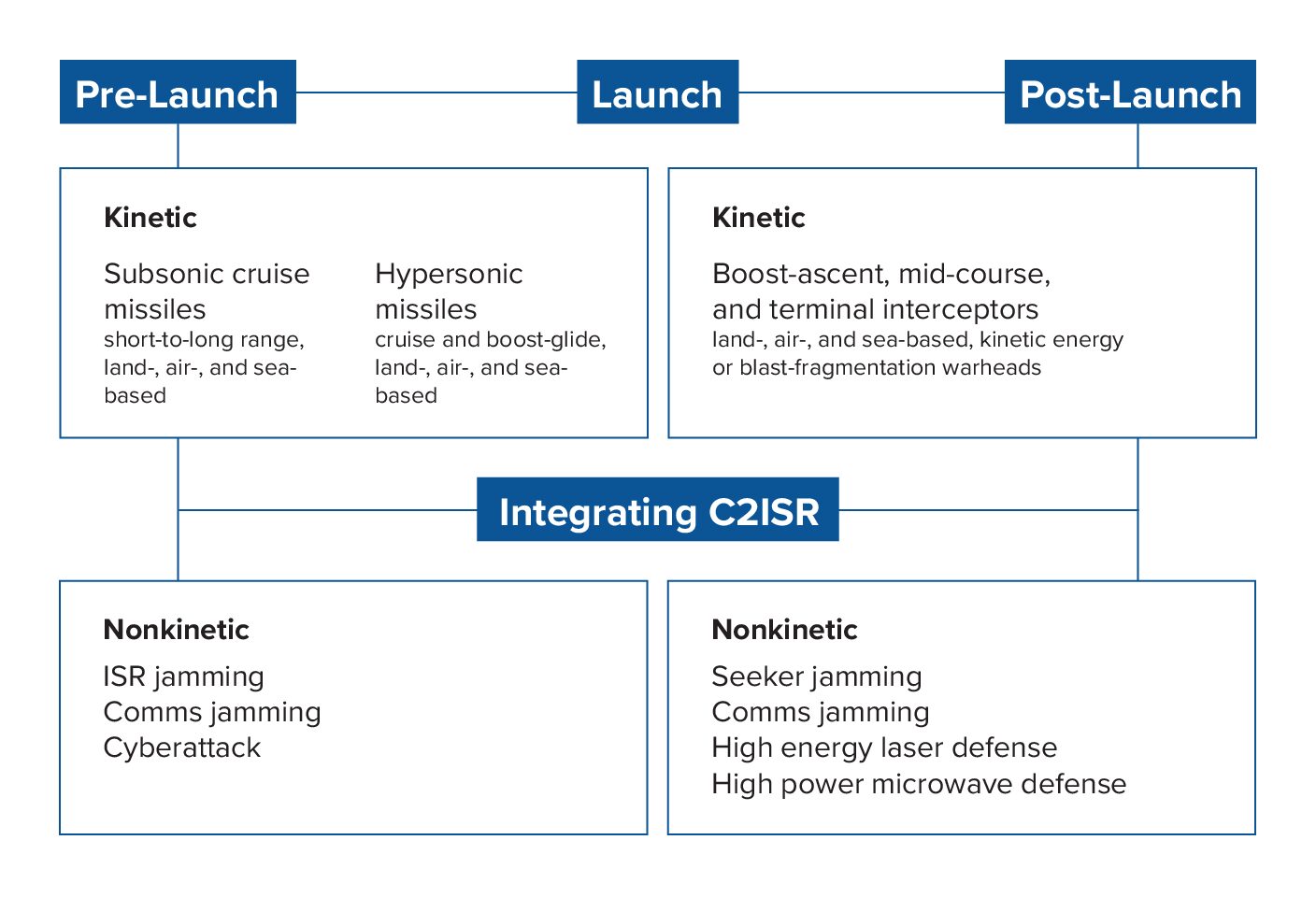
ICLD involves breaking the needed US capability space into four quadrants that include left- and right-of-launch defeat (i.e., before and after launch) of each adversary A2/AD capability, and aggressive use of kinetic and nonkinetic defeat mechanisms (in both phases) to attack and disable vulnerable elements of each respective kill chain. Effective integration of the ICLD warfighting capability requires a dedicated battle management system working to optimize employment across all four capability elements. High-priority targets should be identified based on the specific strategy and mission plan being employed. This strategy should be applied to each element of the adversary’s A2/AD environment.
Take, for example, the mission to defeat the adversary’s strike missile capability described in the A2/AD capability area above. The missile defense modality that gets the most attention is kinetic intercept of an incoming missile by a missile defense system, such as the Terminal High-Altitude Area Defense (THAAD), Patriot, and Aegis ballistic missile defense (BMD) for theater defense, or the Ground-based Midcourse Defense (GMD) system, with the Ground-Based Interceptor (GBI) or eventually the Next-Generation Interceptor (NGI), for defeating nuclear-armed intercontinental ballistic missiles. These systems consist of an integrated network of sensors, command-and-control elements, and interceptors required to perform the detect, control, and engage functions necessary to defeat incoming missiles. While US kinetic, postlaunch missile defeat capability is significant and necessary, it is not sufficient, due to challenges associated with overwhelming numbers, sophisticated tactics, and advanced threats such as hypersonic missiles. These challenges can reduce the effectiveness of each element of the defensive fire-control loop and make defense against a capable adversary very challenging, at best. It therefore becomes essential that the other three elements of the ICLD construct, namely, right-of-launch nonkinetic defeat mechanisms and left-of-launch kinetic and nonkinetic defeat mechanisms, be brought to the fight and integrated to ensure maximum probability of an effective defense. This necessity applies across all six of the A2/AD target areas described above.
While integrated employment of kinetic and nonkinetic options will maximize the effectiveness of postlaunch missile defense systems, a capable and determined adversary can overwhelm a defensive system with numbers and tactics. Therefore, maximum effort must be applied to defeating adversary capability before launch. In other words, an effective defense requires a good offense to deny and degrade the adversary’s ability to employ its A2/AD-enabling systems.
For left-of-launch nonkinetic attack, the objectives are to degrade and/or disable foundational elements of the adversary’s prelaunch kill chain. These include degrading the adversary’s ability to detect and geolocate US targets and to communicate that targeting information to its respective launch assets to help prevent launch. Additionally, attacks on the adversary command-and-control infrastructure would also be an effective means of prelaunch nonkinetic attack.
Even with the other three elements of the ICLD construct, left-of-launch kinetic strike remains an essential component of an effective ICLD construct by enabling the prelaunch physical destruction of required system elements, thereby limiting the number of threats that must be defeated after launch. While the United States has traditionally used subsonic strike capabilities on a battlefield where the timescale of relevance is measured in hours and days, the effectiveness of these systems is severely degraded by today’s peer adversaries that can deploy both high-speed systems to dramatically compress the battlefield timescale and high-end defensive systems to create a highly contested airspace out to an increasingly long range. On such a battlefield, traditional US long-range strike capabilities are simply insufficient to adequately perform the kinetic strike element of ICLD to achieve left-of-launch defeat of time-critical elements of adversary A2/AD capabilities, due to insufficient speed of action at meaningful range and poor survivability. This deficiency greatly jeopardizes the US ability to achieve and maintain battlefield dominance, creating the imperative to field hypersonic strike weapons in meaningful numbers. Once fielded, hypersonic weapons will better enable and then complement more traditional strike capabilities, providing a significant force multiplier.
To fully appreciate the growing asymmetry and the imperative to accelerate the fielding of US hypersonic systems, it is important to understand some of the key challenges and assess the relative status of US hypersonic capability versus China and Russia.
Addressing the challenge
Hypersonic strike systems provide a unique combination of range, speed, survivability, and maneuverability to deliver lethal kinetic effects to defeat a wide range of critical targets in a highly contested environment and within a battlefield timescale of relevance. An aggressive transition to, and fielding of, hypersonic strike capabilities in meaningful numbers is essential to enable US forces to fight in the increasingly compressed timescale being dictated by adversaries’ fielding of high-speed strike systems. The importance of being able to eliminate such an asymmetry between the United States and China was highlighted by then-nominee for Secretary of Defense Pete Hegseth when he stated that the Chinese People’s Liberation Army Rocket Forces can launch a strike from the Chinese mainland on US carriers located in the Pacific theater within twenty minutes. This statement reflects the fact that China has fielded a large number of medium- and intermediate-range ballistic and hypersonic glide weapons designed to carry out high-speed attacks of US and allied forward land and sea bases in the first and second island chain. In both China and Russia, traditional intercontinental nuclear ballistic missiles are being augmented by hypersonic systems being developed, and in some cases fielded, that place the US homeland more at risk. The adversary’s fielding of these weapons dramatically compresses the timescale of any future battle and creates uncertainty that may affect US decision calculus. Without the US fielding of similarly capable systems, a dangerous asymmetry will persist that will dramatically affect the United States’ deterrence posture. This battlefield asymmetry must be addressed with a dedicated and accelerated effort to field US hypersonic strike capabilities to enable success on the tactical battlefield, enhance the effectiveness of the US nuclear deterrent, and provide another rung on the escalation ladder prior to the use of nuclear weapons.
The target sets that define the needed hypersonic strike capabilities for this essential capability include key terrestrial elements of the adversary A2/AD capability areas (described above) such as: the long-range, high-speed strike systems that threaten US forward land, sea, and air bases; integrated air and missile defense launch complexes; terrestrial sites that support adversary kill chains (specifically, command, control, communications, cyber, intelligence, surveillance, reconnaissance, and targeting [C4ISR&T] nodes); terrestrial components of adversary anti-space capabilities; and other high-value, time-critical, and heavily defended targets. The number of targets that will require hypersonic strike missile allocation early in a war is significant, making it imperative to not only develop survivable, long-range hypersonic strike capabilities, but also to field that capability in significant numbers. This translates into the need to create and fund a family of affordable hypersonic systems supported by a robust and properly incentivized industrial base to deliver affordable hypersonic capacity.
Adversary hypersonic strike capability
The current gap in high-speed and hypersonic capability is significant and growing rapidly. Russia and China have both aggressively developed and fielded hypersonic strike capabilities. Russia has fielded the Kinzhal air-launched ballistic missile that has been used against Ukraine. Moscow also has fielded the Tsirkon ship-launched hypersonic strike missile and a new intermediate-range, multiple independent reentry vehicle-equipped ballistic missile with a conventional warhead, also used in Ukraine. Perhaps most notably, Russia has fielded the Avangard intercontinental missile with a hypersonic glide vehicle carrying a nuclear warhead that threatens the US homeland.
China has fielded numerous short-, medium-, and intermediate-range high-speed strike systems including ballistic missiles, ballistic missiles with maneuvering reentry vehicles, and hypersonic glide vehicles that can target US and allied land bases in the first and second island chains as well as US aircraft carrier sea bases at extended range. These systems include, among others, the DF-17, the DF-21 family of missiles, and the DF-26 family of missiles. The recent PRC military parade displayed supersonic and hypersonic cruise missiles. Additionally, Beijing has demonstrated and is on the path to fielding global-range strike systems, as shown by the PRC’s nuclear modernization efforts coupled with a fractional orbital system that was flight tested in 2021.
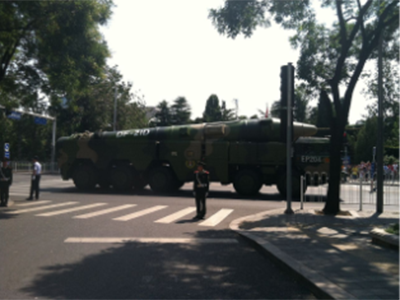
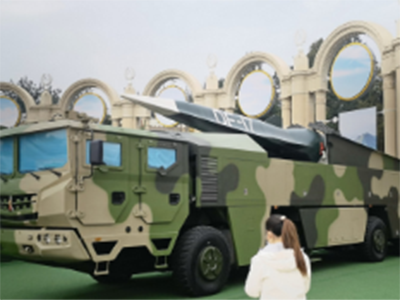
Russia and China have fielded many hundreds of high-speed strike systems that today pose a dramatic threat to forward land and sea bases as well as to the US homeland. Beyond Russia and China, there have also been numerous media reports that indicate the likely development and deployment of hypersonic systems in North Korea and Iran, among others. The asymmetry created by the tactical employment of these systems by nonpeer adversaries is likely not as much of a critical issue given their lack of other key capabilities across the battlefield landscape, but they still pose a clear and present threat to US forward presence and to US allies—and the potential for future nuclear versions could be catastrophic.
US hypersonic capability
The United States, which for years had a lead in research related to hypersonic technologies, has been late in recognizing and embracing the military significance of hypersonic systems, which coupled with rapid advancements by US adversaries has created an asymmetry that is growing and that has the potential to jeopardize future US and allied deterrence and battlefield dominance. With an eye toward addressing that asymmetry, there has been good progress in the United States over the past seven years or so relative to developing a family of first-generation hypersonic strike systems for air, land, and sea launch. However, it is important to note that these systems are just now getting to the point of being ready for fielding.
The Army and Navy have worked to develop a common hypersonic missile that can deliver a hypersonic glide body with a conventional warhead that will be able to strike critical targets that are on the order of 1,700 miles downrange in a matter of minutes. That capability is now ready for fielding by the Army as the Long-Range Hypersonic Weapon (LRHW), aka Dark Eagle. The plan is for that same missile to be fielded as the Navy’s Conventional Prompt Strike (CPS) weapon on Zumwalt-class destroyers and then on Virginia-class submarines.
The Air Force developed a long-range strike system called the Air-Launched Rapid Response Weapon (ARRW), based on the joint Defense Advanced Research Projects Agency and Air Force Tactical Boost Glide program. The integrated ARRW weapon system capability was demonstrated in a successful flight demonstration program that culminated in 2024. That system delivers survivable, lethal effects many hundreds of miles downrange in minutes. The Air Force completed development of ARRW in 2024 but decided not to field ARRW when it was ready. The new administration has included funding for ARRW procurement and fielding in President Donald Trump’s Fiscal Year 2026 budget request.
The Air Force has continued to allocate funding to develop an air-launched Hypersonic Attack Cruise Missile (HACM) capability. Air-launched, lower-cost hypersonic cruise missiles are an important element of the hypersonic strike portfolio because they are more affordable, smaller, and can be fielded in significant numbers on a wide variety of aircraft.
In addition to the significant progress being made in US development efforts for this family of first-generation strike weapons, there are numerous other key efforts of note. There has been significant additional funding allocated to the Test Resources Management Center (TRMC) in the Office of the Secretary of Defense (OSD) to bolster and energize the nation’s hypersonic test and evaluation enterprise and enhance capability and throughput for ground and flight test. There also has been additional OSD funding allocated to bolster the hypersonic industrial base, with presidential determinations signed for munitions, high-temperature materials, propulsion, and guidance and navigation. The Joint Hypersonic Transition Office (JHTO) is making investments in the University Consortium for Applied Hypersonics to help prepare the next-generation workforce and is accelerating the transition of advanced technologies. There has also been significant private capital funding allocated to establish a cadre of small companies to augment the traditional defense industrial base addressing some of the key hypersonic challenges, such as enabling a much more rapid flight test cadence to accelerate learning and development.
With all that said, the United States continues to face a growing battlefield asymmetry in hypersonic and high-speed weapon systems that jeopardizes US deterrence effectiveness and threatens to degrade or eliminate US battlefield dominance in all warfighting domains. The United States must move more aggressively to close the gap in fielding hypersonic weapon capabilities to ensure that such an asymmetry does not stand.
Meeting the imperative
The gap in high-speed and hypersonic systems has resulted in major implications for the US ability to deter and, if necessary, prevail on the battlefield. The capability gap is magnified by the aggressive deployment of the broader A2/AD strategy discussed earlier and the highly contested warfighting environment being established by US adversaries across all warfighting domains. It is imperative that the gap between the hypersonic capability needed to defeat critical adversary A2/AD capability and the current US trajectory for fielding offensive and defensive systems be aggressively closed. Addressing this imperative is essential to ensuring that the United States can operate in a battlefield timescale of relevancewhile also addressing the highly contested environment that has been created across all battlefield domains. Fielding hypersonic strike systems in significant numbers is essential to enabling defeat of the rapidly increasing set of heavily defended, time-critical targets that simply cannot be addressed with the US military’s legacy set of subsonic strike weapons.
It is important to appreciate that the imperative to field hypersonic strike capability does not replace the need for more traditional US weapons. Quite to the contrary, hypersonic weapons are essential to enabling the United States and its allies to fully leverage their traditional capabilities by defeating high-end adversary systems early in a conflict and “decontesting” the battlefield environment. Therefore, the near-term gap that exists and continues to grow is in the ability to field the number and types of weapons necessary to defeat the heavily defended, time-critical target set that the adversary has employed to challenge US battlefield dominance on land, at sea, in the air, and in space. Looking beyond this immediate need, reusable hypersonic aircraft present an opportunity to achieve this decontesting effect with greater persistence and flexibility. A reusable platform can conduct ISR missions to locate and track mobile targets, a critical enabler for the entire strike complex, and then execute or coordinate a strike itself, providing a rapid sensor-to-shooter capability that expendable missiles alone cannot.
Remaining challenges
While there has been good progress on developing the first generation of US hypersonic systems, there are still significant challenges that remain to accelerate fielding of US capability in the numbers necessary to address adversary A2/AD capabilities. Most important among those challenges is affordability. Current systems being fielded by the United States are based on accelerated prototype designs transitioned to a production environment. The system designs were not optimized for affordability and high-rate production and, as such, initial units are more expensive than traditional strike weapons that have been in production for years or decades. The cost will come down as the production rate increases, but the services must prioritize production at cost-efficient rates and institute cost-reduction initiatives to ensure the United States can affordably field the necessary capacity in the near term.
The United States must ensure that the warfighter is equipped to fully leverage the fielding of the hypersonic strike capabilities. As they are fielded, there must also be a high-priority effort to integrate hypersonic strike capability into US deterrence strategies and war plans for future conflicts. In so doing, DOD planners must include a focus on diverse platform integration, production in meaningful numbers, war plan utilization strategies, and, perhaps most importantly, development and implementation of a robust and effective long-range kill web.
A critical challenge that must be overcome to close the capability gap is the inherent bias by the services, and some in OSD, toward next-generation air, land, and sea platforms at the expense of weapon quantity and capability. Each service has historically prioritized funding for development of next-generation platforms that have grown increasingly more complex and expensive due to the need to operate in an ever more contested environment, and they are almost always years late and billions of dollars over budget. As a result, weapons programs have consistently been bill-payers for platform priorities and overruns.
Nothing will be possible without an energized and expanded industrial base that embraces speed of development, affordability, and innovation across the portfolio. The current industrial base is simply not equipped or incentivized to innovate, design, and build hypersonic weapons to achieve affordable capacity. There must be a dramatic shift in perspective to embrace a model that is much more like the automobile, commercial aerospace, and commercial space-access industries than the traditional defense contractor business model. New and innovative contracting incentives should be created through collaboration between the government and industry to motivate the industry behavior essential to national success (i.e., rapid, on-time delivery of highly capable systems at or below clearly defined cost objectives). Investments in the hypersonic industrial base necessary to address this deficiency can come in the form of Defense Production Act Title III investments, Innovation Capability and Modernization (ICAM) program and Industrial Base Analysis and Sustainment (IBAS) program investments, and Manufacturing Technology (ManTech) program investments. However, these investments should be targeted to new and innovative ways of achieving affordable capacity for hypersonic systems and should not be used to simply build up traditional industry to do more of the same.
A call for action
The DOD and Congress can, and should, take numerous additional actions to rapidly and efficiently field warfighting capability based on hypersonic strike systems, and to bolster capabilities for defense against rapidly proliferating adversary hypersonic strike and, more broadly, growing A2/AD capabilities. Recommended actions include the following.
1. Create a munitions czar to oversee weapons development and procurement
Problem statement
The US military services are platform-centric, with weapon programs often having lower priority than development and procurement of current and next-generation platforms. These platforms are notoriously expensive, with delays measured in years and consistent cost overruns totaling billions of dollars. Services historically defund weapons programs to pay for these overruns, while also slow-rolling advanced weapons activities that might in any way compete politically with the advanced platform budget allocations.
Recommendation
The DOD should create a direct reporting program manager (DRPM) for weapons, a “weapons czar,” reporting directly to the deputy secretary of defense, and elevate the principal director for hypersonics to be a direct report to that DRPM, with responsibility and authority for defining the vision, strategy, and execution plans for all high-speed weapons programs, including defense against adversary high-speed weapons, in close coordination with the DRPM handling the proposed “Golden Dome” missile shield. The weapons czar should have authority over advanced weapon budget allocations and be held accountable for program execution.
2. Aggressively field and evolve first-generation hypersonic weapons
Problem statement
The United States has made good progress developing its first generation of hypersonic strike weapons. However, fielding has been delayed by technical challenges, budget battles, and shifting priorities, while adversaries continue to expand their arsenals. These initial systems, designed as accelerated prototypes, are also not yet optimized for affordability or high-rate production.
Recommendation
The DOD and Congress should ensure stable funding and priority to aggressively field first-generation hypersonic weapons across air, land, and sea launch platforms at the earliest possible dates, and fully equip units at levels consistent with the DOD’s analysis of warfighting needs. The DOD must work with industry to drive down costs as production rates increase. A block-upgrade strategy should be implemented for each system to rapidly insert advanced capabilities and enhance affordability, allowing them to service a broader set of targets and be procured and fielded in the necessary numbers.
3. Prioritize next-generation hypersonic systems designed for affordable capacity
Problem statement
While first-generation systems are critical for closing the immediate capability gap that adversaries have opened regarding expendable hypersonic missiles, the initial cost of first-generation US systems will limit the capacity that the United States can affordably field. To counter the sheer number of targets presented by the A2/AD strategies of peer adversaries, the United States requires a next-generation family of long-range, high-speed strike systems designed from the outset for affordable, high-rate production and broad launch-platform compatibility. The current industrial base is not structured or incentivized for this kind of rapid, cost-effective innovation.
At the same time, focusing solely on mirroring adversaries’ approach surrenders the strategic initiative. An opportunity remains to lead in the next transformational capability: reusable hypersonic aircraft for responsive ISR and strike missions. As space becomes increasingly contested, hypersonic aircraft could decisively counter adversary A2/AD strategies by enabling persistent, survivable operations from within contested zones.
Recommendation
The DOD should robustly fund two distinct but complementary lines of effort for affordable capacity:
- (a) Next-generation expendable missiles: Pursue a family of lower-cost, high-capacity missiles for affordable capacity designed to service a broad set of A2/AD targets. This should be done through competitive programs that incentivize traditional companies to deliver affordable capacity, and inspire new and innovative companies, including nontraditional commercial firms, to compete against the traditional defense industrial base. These programs should set firm cost requirements and a trade space of performance objectives, with the goal of achieving optimal affordability. High-capacity designs must be integrated with air, land, and sea launch platforms that allow for delivery of high-capacity effects on a highly contested battlefield.
- (b) Foundational reusable aircraft programs: Aggressively fund technology maturation and demonstrator programs for reusable hypersonic aircraft. While the initial investment is higher, these platforms offer the prospect of significantly lower cost per sortie for persistent ISR and strike missions over their lifecycle, representing the most viable path to truly affordable and sustainable capacity. Affordability must be a key driver to the design process at the earliest stages of this effort.
4. Mandate and resource an ICLD strategy
Problem statement
Fielding offensive hypersonic weapons is only one part of the solution to defeating complex A2/AD environments created by adversaries. Battlefield dominance will require both an architecture and approach that is holistic. Relying solely on postlaunch kinetic interceptors (like Patriot or THAAD) is insufficient due to challenges of overwhelming numbers, sophisticated tactics, and the unique flight characteristics of adversary cruise, ballistic, and hypersonic missile threats.
Recommendation
The DOD must formally integrate the fielding of offensive and defensive hypersonic systems into an integrated comprehensive layered defeat architecture. This framework should be adopted and must be resourced to include robust pre- and post-launch kinetic and nonkinetic capabilities. It should be an underpinning of both homeland defense (such as the proposed “Golden Dome” missile shield) and theater warfighting strategies, leveraging hypersonic strike as a critical left-of-launch enabler to disrupt and destroy adversary systems before they can be used while defeating every other element of the adversary kill chain through the integration of kinetic and nonkinetic capabilities.
5. Accelerate learning through an integrated national test enterprise
Problem statement
The pace of developing and fielding hypersonic systems is directly tied to the ability to test them early and often in a development cycle. The nation’s once-robust hypersonic ground- and flight-test infrastructure, while improving, continues to be a bottleneck, slowing down the development cycle for next-generation hypersonic systems.
Recommendation
The United States must continue to enhance its hypersonic ground and flight tests and its modeling and simulation (M&S) capabilities to enable accelerated learning and development. This enterprise must be resourced to support both rapid iteration of expendable missile designs and the more complex, sustained flight test campaigns required for reusable air-breathing aircraft. The progress made by the TRMC in ground testing, flight testing, and enhanced test-range telemetry should be embraced and robustly funded. The HyperCorr program, emphasizing ground and flight test efforts tightly coupled to high-fidelity M&S, should be accelerated. Greater emphasis should be placed on tightly coupling these TRMC investments to the overarching objectives of the DOD hypersonics program portfolio, with emphasis on accelerated development of affordable capacity for future hypersonic capability.
6. Energize allied codevelopment and coproduction
Problem statement
The United States will likely not face an adversary alone in any future major conflict. Collaboration with allies on the development and deployment of advanced high-speed systems has been limited by information-sharing challenges, missing key opportunities to share costs, leverage innovation, and together build a more integrated and capable coalition force.
Recommendation
The United States must work diligently with allies to cooperatively develop, produce, and deploy advanced and affordable hypersonic strike capabilities. Cooperative programs, such as AUKUS Pillar 2, which focuses on developing and delivering emerging technology, should be nurtured and expanded to advance alliances, foster innovation, and field capabilities in more meaningful numbers. Collaboration should be enhanced with all allies pursuing advanced high-speed systems, and with the removal of barriers to information and technology sharing, wherever it is possible.
7. Modernize theater and strategic nuclear delivery options
Problem statement
Adversary integrated air defenses and nuclear-modernization efforts are challenging the survivability of legacy nuclear delivery systems. For example, the F-35A dual-capable aircraft, central to NATO’s nuclear mission, is not likely to remain sufficiently survivable in the 2030s against peer defenses in all relevant scenarios.
Recommendation
The DOD should pursue hypersonic delivery options for future strategic and tactical nuclear weapons to ensure enduring deterrence. A high-speed, air-delivered standoff weapon should be considered to augment and then replace B61 gravity bombs for the NATO mission. The United States should consider new nuclear capabilities that would be delivered by highly responsive systems, like hypersonic weapons, capable of penetrating advanced defenses with high reliability.
8. Bolster layered defenses against hypersonic threats
Problem statement
Defending against adversary hypersonic strike weapons is exceptionally difficult. These threats challenge all aspects of the defensive fire-control loop, from detection to engagement, due to their speed, range, altitude, and highly maneuverable and unpredictable trajectories.
Recommendation
The DOD must pursue a defense-in-depth, layered strategy for counter-hypersonic defense. Crucially, this kinetic shield must be integrated with nonkinetic defensive layers, such as capabilities that degrade or deny satellite navigation, communication, and terminal missile seekers, to maximize the probability of defeat. This postlaunch capability is a necessary, but not sufficient, element of the ICLD architecture.
9. Develop robust long-range kill webs for hypersonic strike capability
Problem statement
Current kill webs for effective employment of long-range strike missiles require considerable time and effort and can be brittle. This vulnerability limits the ability to deliver meaningful warfighting capability in a highly contested A2/AD environment. Warfighting effectiveness for long-range strike systems can be significantly enhanced relative to traditional weapon employment by the integration of hypersonic strike weapons. Hypersonic weapons are inherently survivable due to their ability to maneuver unpredictably and fly high-altitude, high-speed trajectories. This characteristic dramatically reduces both mission planning time prior to weapon employment and target custody duration for relocatable and moving targets.
Recommendation
The DOD should significantly enhance the development and fielding of robust long-range strike kill-web capabilities, fully leveraging the advantages of hypersonic strike weapons. An integrated and specific initiative should be funded to enhance time-critical targeting capabilities that would leverage the full spectrum of US and allied ISR and targeting systems.
10. Rapidly transition advanced technology and enhance the workforce to support future hypersonic capability development and production
Problem statement
The JHTO has responsibility for this area of the national strategy. JHTO has, so far, done a good job in creating the University Consortium for Applied Hypersonics. However, JHTO budgets have been limited beyond that. Workforce challenges and resulting technology maturation timelines are bottlenecks to further scaling the development and production of hypersonic capabilities.
Recommendation
The DOD should champion a whole-of-nation effort to address workforce initiatives and science and technology advancements to quicken the pace for future development, production, and fielding. The department and Congress should robustly fund the JHTO to identify and aggressively develop new technology for rapid transition to next-generation systems and to accelerate upgrades for existing systems. Initiatives should include the maturation of concepts and technology driven by the need to deliver affordable capacity and advanced capabilities, including future reusable hypersonic aircraft. Finally, the JHTO should more tightly couple its workforce and technology development strategies to the needs of traditional and nontraditional industry to enable accelerated development of future affordable hypersonic systems.
Conclusion
Potential adversaries, particularly China and Russia, are creating an increasingly contested environment that severely challenges US battlefield dominance. A central element of this challenge is their fielding of a variety of high-speed and hypersonic strike systems designed to attack US and allied forces at long range and with overwhelming speed.
To ensure US battlefield preeminence, the Pentagon must develop and field capabilities to enable execution of an integrated comprehensive layered defeat strategy that leverages kinetic and nonkinetic means to defeat adversary capabilities. As part of this strategy, it is imperative for the United States to develop and field its own hypersonic strike weapons in substantial numbers to enable US forces to operate effectively and survive on the modern battlefield by defeating adversary high-end capabilities in a battlefield timescale of relevance.
To that end, the Department of Defense and Congress should aggressively move forward to field first-generation air-, land-, and sea-launched hypersonic strike weapons; develop and field a next-generation family of affordable hypersonic strike systems in meaningful numbers; mature and demonstrate future hypersonic aircraft technologies; and energize the foundational enablers of the industrial base, test infrastructure, technology, and workforce. Simultaneously, the United States must bolster its defenses against adversary air and missile threats through implementation of the full spectrum of ICLD capabilities. The time to act is now to close the growing gap in offensive and defensive hypersonic capability and ensure the United States’ ability to deter and, if necessary, win in any future conflict.
List of acronyms
| Acronym | Definition |
| A2/AD | Anti-access/area-denial |
| ARRW | Air-launched Rapid Response Weapon system |
| BMD | Ballistic missile defense |
| C4ISR | Command, control, communications, cyber, intelligence, surveillance, and reconnaissance |
| CPS | Conventional Prompt Strike (weapon system) |
| DOD | US Department of Defense |
| DRPM | Direct reporting program manager |
| EM | Electromagnetic |
| GBI | Ground-Based Interceptor |
| HACM | Hypersonic Attack Cruise Missile |
| IBAS | Industrial Base Analysis and Sustainment (program) |
| ICAM | Innovation Capability and Modernization (program) |
| ICLD | Integrated comprehensive layered defeat strategy |
| ISR | Intelligence, surveillance, and reconnaissance |
| JHTO | Joint Hypersonic Transition Office |
| LRHW | Long-Range Hypersonic Weapon, or the “Dark Eagle” |
| M&S | Modeling and simulation |
| ManTech | Manufacturing technology |
| NGI | Next-Generation Interceptor |
| OSD | Office of the US Secretary of Defense |
| PRC | People’s Republic of China |
| THAAD | Terminal High-Altitude Area Defense |
| TRMC | Test Resources Management Center |
| UCAH | University Consortium for Applied Hypersonics |
Biographies
Co-chairs

Deborah Lee James is an board director and served as the twenty-third secretary of the US Air Force from 2013 to 2017. In this capacity, she was responsible for organizing, training, equipping, and providing for the welfare of the Department of the Air Force’s nearly 660,000 active-duty, Guard, Reserve, and civilian airmen and their families. She also oversaw the Air Force’s annual budget of more than $139 billion.
James has extensive homeland and national security experience in the federal government and the private sector. In the private sector, she served as president of Science Applications International Corporation’s Technical and Engineering Sector, as executive vice president and chief operating officer at Business Executives for National Security, and as vice president at United Technologies.
In earlier government positions, James served as assistant secretary of defense for reserve affairs, in the office of the assistant secretary of defense for legislative affairs, and as a professional staff member of the House Armed Services Committee.
James earned a bachelor of arts degree in comparative area studies from Duke University and a master’s degree in international affairs from Columbia University School of International and Public Affairs. She served as co-chair of the ’s Commission on Defense Innovation Adoption.
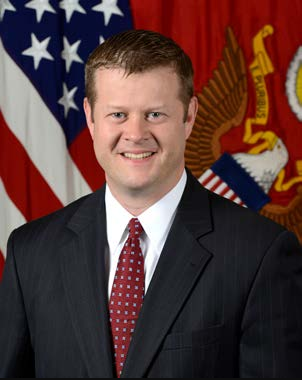
Ryan D. McCarthy served as the twenty-fourth secretary of the US Army from 2019 to 2021. In this capacity, he was responsible for the recruitment, organization, training, equipping, and care of 1.4 million active-duty, National Guard, and Reserve soldiers, Department of the Army civilians, and their families. Prior to this role, he served as the thirty-third under secretary of the Army from 2017 to 2019.
McCarthy has extensive national security experience in government and the private sector. Prior to his confirmation as the under secretary of the Army, McCarthy worked for Lockheed Martin Corporation in vice president roles responsible for the F-35 Joint Strike Fighter program and the company’s global security policy. Earlier in his career, he was a vice president for HSBC.
In earlier government positions, he served as special assistant to then-Secretary of Defense Robert Gates, as the special assistant to the under secretary of defense for acquisition, technology, and logistics, and as a professional staff member of the US House of Representatives Committee on International Relations. McCarthy proudly served in the US Army from 1997 to 2002 and was involved in combat operations in Afghanistan in support of Operation Enduring Freedom with the 75th Ranger Regiment. He holds a bachelor of arts in history from Virginia Military Institute and a master of business administration from the University of Maryland’s School of Business.
Lead author

Michael E. White was the inaugural principal director for hypersonics in the Office of the Under Secretary of Defense for Research and Engineering, serving from October 2018 to June 2023. In that capacity, White was responsible for leading the Pentagon’s vision and strategy for developing offensive and defensive warfighting capability enabled by hypersonic systems. White previously served as the head of the air and missile defense sector at the Johns Hopkins University Applied Physics Laboratory (JHU/APL). White is a board director of North Wind USA Inc., which provides research, development, test, and evaluation products and services in aerospace and defense, and of Textum, which produces advanced textiles and aerospace composites. As managing member of WhiteAero, LLC, he is a senior defense consultant for hypersonic, air, and missile defense systems and tactical and strategic strike systems. WhiteAero’s clients include Lockheed Martin and GE Aerospace, which are both supporters of the Hypersonic Capabilities Task Force and producers of hypersonic capabilities, as well as Stratolaunch, X-Bow Systems, Cerberus Capital Management, Karman Space and Defense, Textum, MIT Lincoln Laboratory, JHU/APL, ACMI, and Riverside Research, all of which are involved in hypersonic capabilities.
Task force director

Stephen Rodriguez is the founder of One Defense, a technology-enabled consulting firm that identifies advanced commercial capabilities and accelerates their transition into the defense industrial base. He was a senior leader at an artificial intelligence growth-stage company and a global defense corporation. He has also been in and out of the US government throughout his career, including operational service in Colombia, Armenia, Azerbaijan, and Afghanistan. Rodriguez serves on the boards of fourteen venture-backed companies, including Applied Intuition, Chariot Defense, Firestorm, Kela Systems, Smack Technologies, Ursa Major Technologies, and ZeroMark. He is also a commission director at the , chairman of Blue Forge Alliance, and a life member at the Council on Foreign Relations. Rodriguez received a bachelor of business administration from Texas A&M University and a master’s degree from Georgetown University’s School of Foreign Service. He has been published in the Wall Street Journal, Foreign Policy, War on the Rocks, and National Review.
Program director

Clementine G. Starling-Daniels is the former director of the ’s Forward Defense program and is now a nonresident senior fellow with Forward Defense. Her contributions to this task force concluded before she departed her fulltime role at the Council in September 2025. In her role, she shaped the center’s US defense research agenda and produced thought leadership on US security strategies and the evolving character of warfare. Her research focuses on long-term US thinking on issues like China’s and Russia’s defense strategies, space security, defense industry, and emerging technology. Prior to launching Forward Defense, Starling-Daniels served as deputy director of the ’s Transatlantic Security team, specializing in US security policy toward Europe and NATO. During her time at the , Starling-Daniels authored numerous reports and commentaries on US space strategy, deterrence, operational concepts, coalition warfare, and US-Europe relations. Outlets that have featured her analysis include Bloomberg, Defense One, Defense News, RealClearDefense, the National Interest, SpaceNews, NATO’s Joint Air and Space Power Conference, the BBC, National Public Radio, and ABC News, among others. Starling-Daniels previously worked in the UK Parliament focusing on technology, defense, and Ukraine. She graduated with honors from the London School of Economics with a bachelor’s degree in international relations and history, and she received her master of arts in security studies from Georgetown University’s School of Foreign Service.
Task force staff
Mark J. Massa is the deputy director of the Forward Defense program of the Scowcroft Center for Strategy and Security at the . He leads Forward Defense’s work on strategic forces policy. He holds a master’s in security studies and a BSFS in science, technology, and international affairs from Georgetown University.
Jonathan Rosenstein is a program assistant in Forward Defense. He supports the program’s strategic forces body of work. He holds a master of security policy studies from The George Washington University and a bachelor’s degree from Tulane University.
Sponsors
Explore the programs

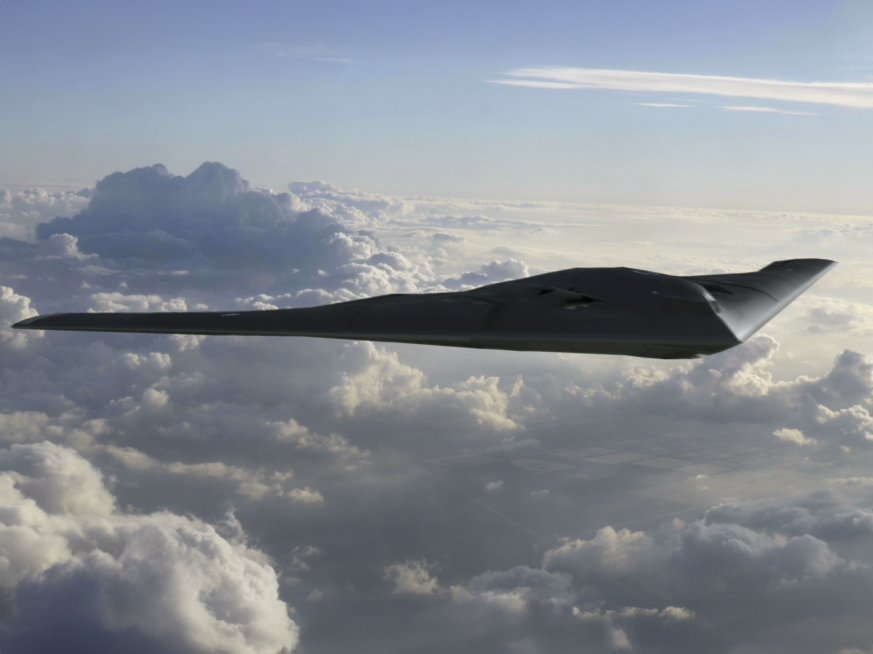
Forward Defense leads the ’s US and global defense programming, developing actionable recommendations for the United States and its allies and partners to compete, innovate, and navigate the rapidly evolving character of warfare. Through its work on US defense policy and force design, the military applications of advanced technology, space security, strategic deterrence, and defense industrial revitalization, it informs the strategies, policies, and capabilities that the United States will need to deter, and, if necessary, prevail in major-power conflict.
Image: Service members from the US Department of Defense and the Australian Defence Force pose with the Long Range Hypersonic Weapon System in Northern Territory, Australia, July 9, 2025. (US Army photo by Sgt. Perla Alfaro)

